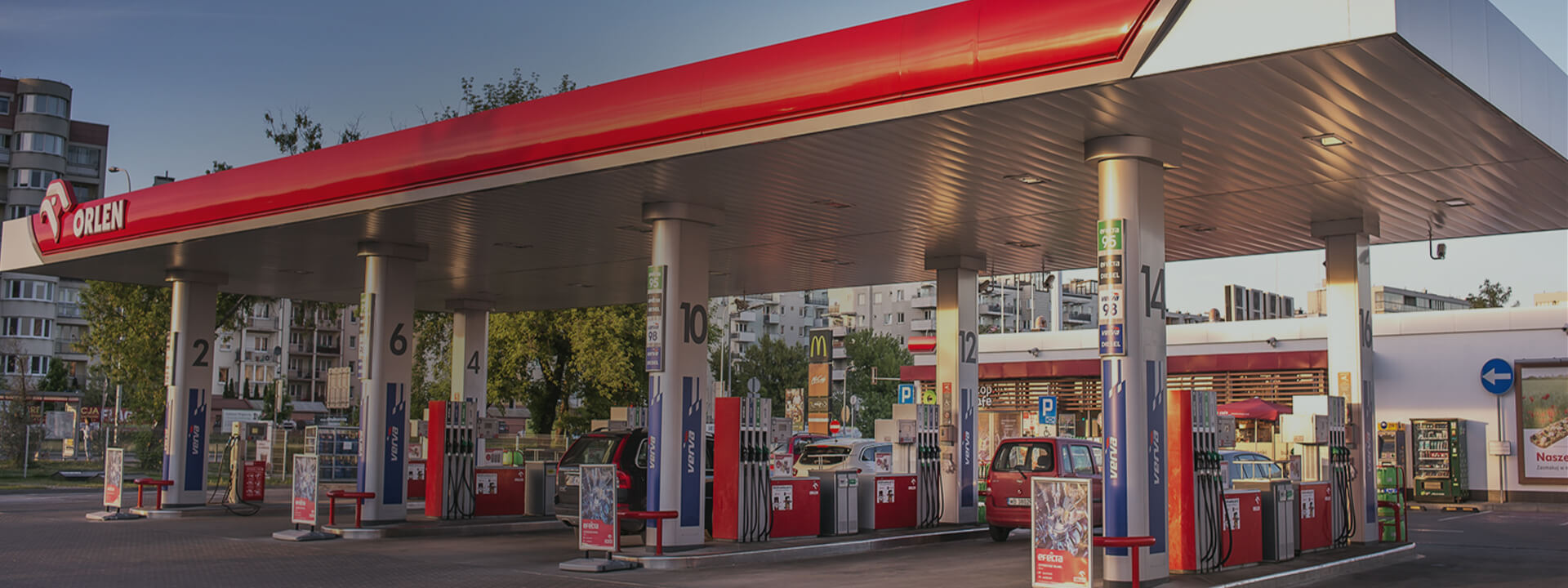Petrochemicals
Key assets
ORLEN Group
The key production facility of the Petrochemicals segment is the Olefins unit, with a maximum capacity of approximately 700 thousand tonnes of ethylene and approximately 380 thousand tonnes of propylene. Monomers manufactured at ORLEN are used as feedstock for the polymer units at Basell Orlen Polyolefins and the PVC unit at ANWIL. ORLEN also operates a modern PX/PTA complex with an annual capacity of around 690 thousand tonnes of terephthalic acid.In 2025, ORLEN plans to complete the expansion of the Olefins complex under the Petrochemical Development Programme. The project will position the Płock production plant among Europe’s largest and most advanced facilities of its type. Furthermore, at the start of January 2023, ORLEN concluded an agreement to acquire a portion of Basell ORLEN Polyolefins' LDPE assets, with a combined annual capacity of 100 thousand tonnes.
The ORLEN Unipetrol Group
Owns petrochemical assets with a combined annual production capacity of approximately 600 thousand tonnes, including 320 tonnes of polyethylene and approximately 280 thousand tonnes of polypropylene. The year 2020 saw the launch of a new Polyethylene 3 unit, with an annual capacity of approximately 270 thousand tonnes, allowing Unipetrol to increase the use of the Olefins unit and further integrate the petrochemical and refining operations. In 2022, at the Litvinov plant, ORLEN Unipetrol launched a unit for the production of liquid dicyclopropentadiene (DCPD), which is used in the automotive, construction, electrotechnical, pharmaceutical and medical industries. Upon completion of the project, ORLEN Unipetrol became one of the four largest manufacturers of this product in Europe, with a production capacity of about 26 thousand tonnes of DCPD per year. The technology used to manufacture DSPD in Litvínov was developed through a collaboration between scientists from ORLEN Unipetrol and the University of Chemistry and Technology in Prague.
The process was developed as part of a project to find a method of separating hydrocarbons that are secondary products from petrochemical facilities and may find market applications. DCPD will be an intermediate for a variety of other products, including polymeric materials, resins and chemical materials used in the manufacture of wind turbine rotor blades, coloured asphalts, adhesives, inks, paints or special lenses, among other things. In addition, DCPD will find a number of applications in automotive production (car frames), construction (washing and toilet facilities for kitchens and bathrooms), electrical engineering (fiber optic cables), as well as the pharmaceutical and medical industries.
The Włocławek-based Anwil
is the only producer of polyvinyl chloride (PVC) in Poland and one of the major manufacturers of sodium hydroxide and fertilizers in the country. Its annual production capacity is ca. 1 million tonnes of nitrogen fertilizers, 0.4 million tonnes of PCV and granulates, and 0.2 million tonnes of sodium hydroxide. The planned construction of a third nitrogen fertilizer unit will increase Anwil’s annual production capacity to approximately 1.5 million tonnes from 2023 onwards.
Basell ORLEN Polyolefins
in Płock operates facilities with a total production capacity of 800 thousand tonnes (320 thousand tonnes of polyethylene and 480 thousand tonnes of polypropylene). Its products are marketed both in Poland and in foreign markets. In early 2023, the company sold part of the production and business area responsible for the production of low-density polyethylene LDPE to ORLEN. After the transaction is finalised, Basell ORLEN Polyolefins will focus on the development of PP technology, used to manufacture polypropylene, and HDPE, used in the production of high-density polyethylene.
ORLEN Group’s market
Wholesale of petrochemical
The ORLEN Group is the largest petrochemical company in Central and Eastern Europe, the only manufacturer of monomers and polymers on the Polish market, and the manufacturer of most of the petrochemical products available on the Czech market.
Polyethylene manufacturers in Europe.
Source: In-house analysis based on Market Analytics – Polyolefins – 2022 (Nexant) report.
- Europe’s production capacities for high-density (HDPE) and low-density (LDPE) polyethylene are currently at around 16,929 thousand per year.
- Lyondell Basell Industries − the largest polyethylene (HDPE, LDPE) manufacturer, with an annual production capacity of approximately 2,170 thousand tonnes (including its 50% share in Basell ORLEN Polyolefins Sp. z o.o. (BOP)) and assets in Germany, France, and Poland.
- Ineos Olefins & Polymers Europe with a production capacity of about 1,600 thousand tonnes/year of polyethylene (HPDE, LDPE), with assets located in Belgium, France, Germany, Italy and Norway.
- The total production capacity of the ORLEN Group, with production sites in Poland and Czechia (including its 50% share in BOP), is approximately 735 thousand tonnes per year.
Polypropylene manufacturers in Europe.
Source: In-house analysis based on Market Analytics – Polyolefins – 2022 (Nexant) report.
- Europe’s annual production capacities for polypropylene are at around 13,501 thousand tonnes.
- Lyondell Basell Industries has an annual production capacity of around 2,630 thousand tonnes (including its 50% share in BOP) and assets in Germany, France, Italy, Spain, the UK, the Netherlands and Poland.
- Borealis – with an annual polypropylene production capacity of approximately 1,885 thousand tonnes and assets in Belgium, Germany, Austria, and Finland.
- Total Petrochemicals – with an annual polypropylene production capacity of approximately 1,080 thousand tonnes and assets in Belgium and France.
- The total production capacity of the ORLEN Group, with production sites in Poland and Czechia (including its 50% share in BOP), is approximately 590 thousand tonnes per year.
PTA manufacturers in Europe.
Source: In-house analysis based on Wood Mackenzie 2022 data.
- The European nominal PTA production capacities total 3,985 thousand tonnes per year.
- Indorama – Europe’s largest PTA manufacturer, with a nominal production capacity of 1,775 thousand tonnes per year and assets in Portugal, Spain and the Netherlands.
- Ineos (after the acquisition of BP Chembel NV in 2020) – Europe’s second largest PTA manufacturer, with an annual production capacity of 1,400 thousand tonnes, located in Belgium.
- ORLEN is the only manufacturer in Europe to have production units fully integrated with paraxylene production, and its production capacity totals 690 thousand tonnes per year.
PVC manufacturers in Europe.
Source: In-house analysis based on Market Analytics – Vinyls – 2022 (Nexant) report.
- The European nominal PVC production capacities total 8,074 thousand tonnes per year.
- Inovyn – a company formed following the combination of Ineos Chlor and Solvay; its annual production capacity is 2,106 thousand tonnes.
- Other manufacturers, such as Vinnolit, Kem One and Vynova, have annual PVC production capacities estimated at 885 thousand, 882 thousand and 830 thousand tonnes, respectively.
- The ORLEN Group, with the annual production capacity of its Anwil and Spolana units at 475 thousand tonnes, ranks fifth on the European plastics market.
- Głównymi konkurentami Anwilu na rynku europejskim PCW są spółki Inovyn i Vynova, a na rynku krajowym spółka BorsodChem (Wanhua Group).
Sales volume
The ORLEN Group's total sales in the Petrochemicals segment increased from the previous year to 5,013 thousand tonnes in 2022. This rise was driven by increased sales of olefins, polyolefins, PVC, and PTA, which was aided by the absence of maintenance shutdowns at the Olefin and PX/PTA units that occurred in the previous year.
Sales of the ORLEN Group's Petrochemicals segment [PLN million/thousand tonnes].
Revenue structure of the ORLEN Group Petrochemicals segment.
The ORLEN Group's total sales in the Petrochemicals segment increased from the previous year to 5,013 thousand tonnes in 2022. This rise was driven by increased sales of olefins, polyolefins, PVC, and PTA, which was aided by the absence of maintenance shutdowns at the Olefin and PX/PTA units that occurred in the previous year.
Sales markets and market shares
Sales volumes in home markets7 of the ORLEN Group Petrochemicals segment [thousand tonnes].
Polish market
Sales volumes of the ORLEN Group Petrochemicals segment in Poland [thousand tonnes].
Sales structure of the ORLEN Group Petrochemicals segment in Poland.
In 2022, sales of the ORLEN Group’s Petrochemicals segment in Poland were 3,102 thousand tonnes, having increased by 129 thousand tonnes year on year. The increase in volumes was primarily driven by a 21.4% rise in sales of monomers, as well as a 10.4% increase in sales of PTA compared with the sales in 2021, when the Olefin unit underwent a maintenance shutdown in the second quarter, and the PX/PTA complex was in shutdown and experienced technical issues in the first quarter of the year which affected the volumes. The increase was partly limited by a 20.2% decrease in sales of fertilizers due to lower production volumes caused by high prices of natural gas in the second half of 2022.
The Baltic States and Ukraine
Sales volumes of the ORLEN Group Petrochemicals segment in markets served by ORLEN Lietuva [thousand tonnes].
ORLEN Lietuva Group's monomer sales in 2022 were 55 thousand tonnes, having decreased by (18) thousand tonnes (y/y) as a result of the Q2 2022 cyclical maintenance shutdown.
Czech market
Sales volumes of the ORLEN Group Petrochemicals segment in the Czechia [thousand tonnes].
Sales structure of the ORLEN Group Petrochemicals segment in the Czechia.
In 2022, sales of the ORLEN Group’s Petrochemicals segment in Czechia were 1,854 thousand tonnes, and stayed relatively unchanged year on year.
Logistics assets
In 2022, the ORLEN Group in Poland utilised a total of 38 facilities for the operational requirements of receiving, storing, releasing, and transshipping feedstock, petrochemical products and fuels. These facilities included ORLEN’s own terminals, terminals owned by ORLEN Group companies, as well as facilities owned by third parties. As at the end of 2022, the total capacity for storage of hydrocarbons and derivatives available to the Group within its own infrastructure and contracted from third parties was over 5 mcm.
Read also:
Short-cuts:
ORLEN Group 2022 Integrated Report
You can also download the report in PDF format
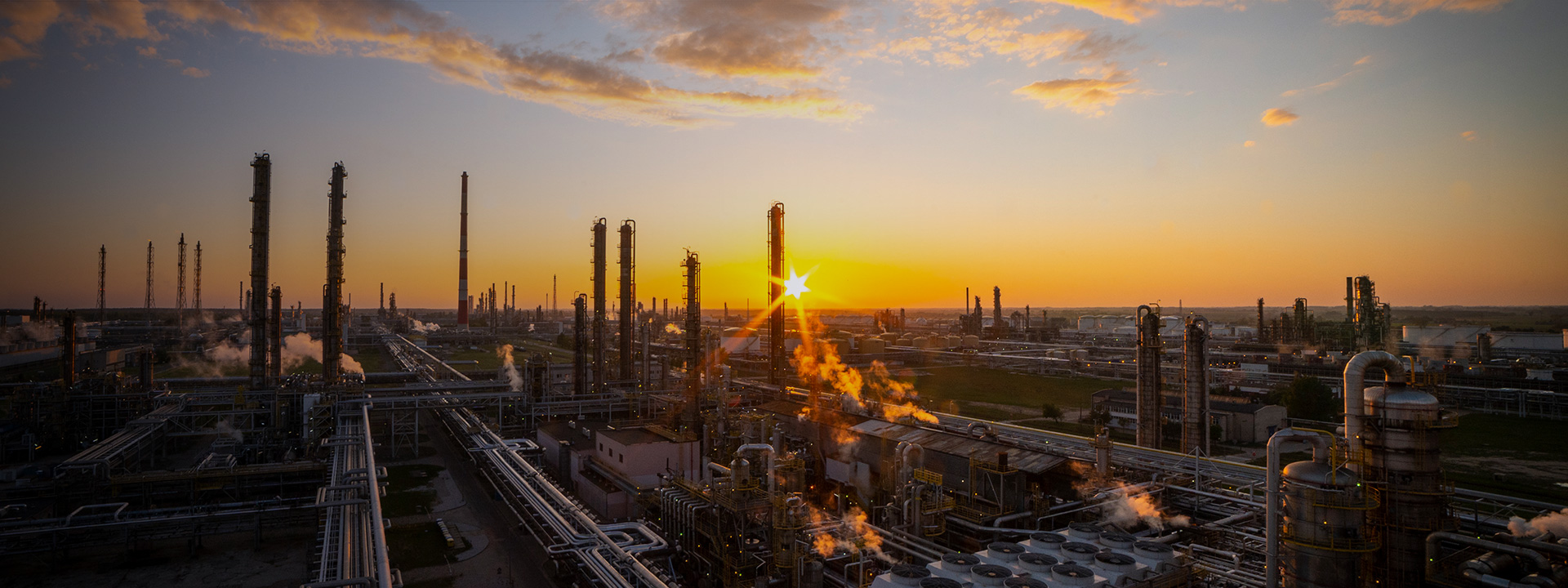

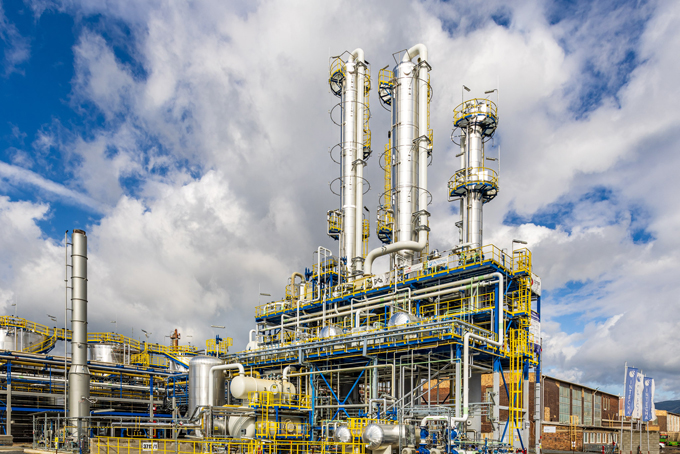
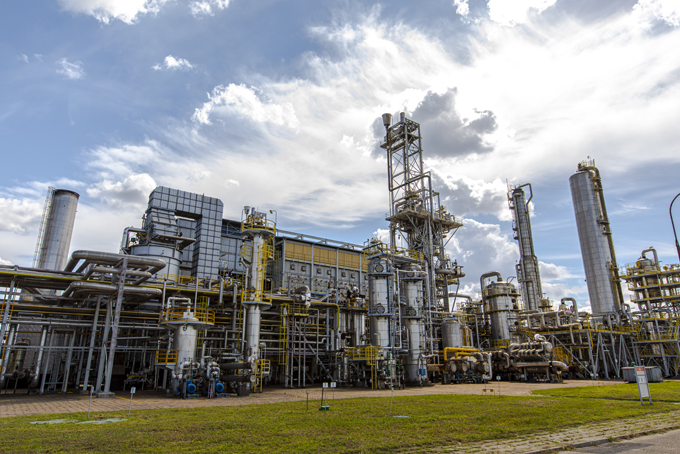
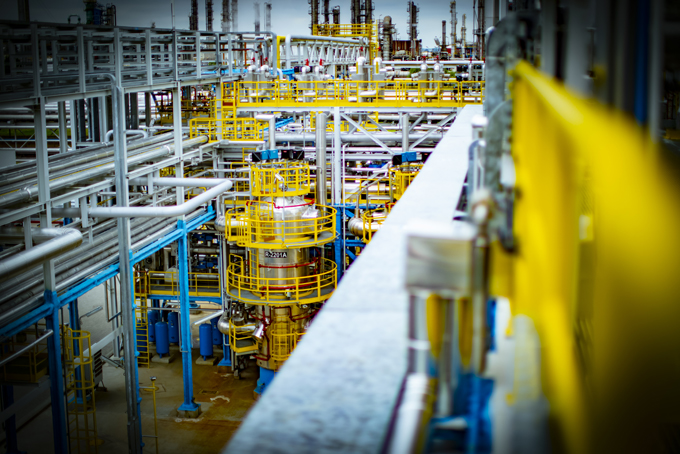
 - IMG_0096.jpg)

